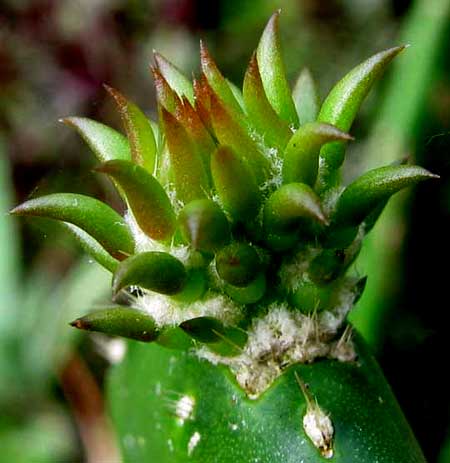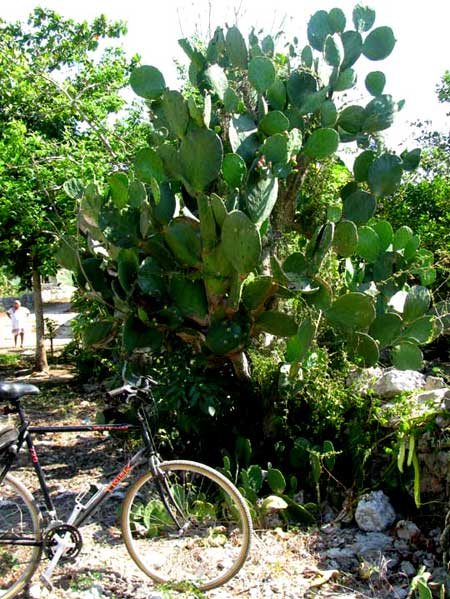
In the Yucatan cacti can be trees, as the picture below shows.

That's the Indian-Fig, Opuntia ficus-indica, a kind of pricklypear cactus. Many Northerners call it by its Mexican name, Nopal. The feature that makes it so beloved among Mexico's country folks is that it's edible, and many of its cultivars are spineless. When its tender pads first sprout, they can be collected, processed, cooked, and eaten. Pads ready to be cooked are shown below.
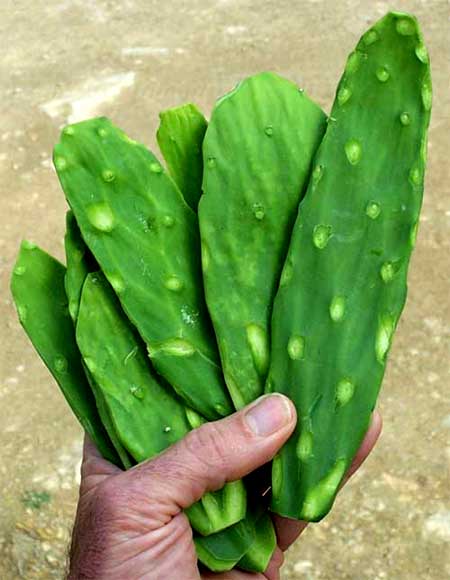
Preparing the pads for cooking consists of cutting little bumps off the pads. Even if the bumps don't sprout spines, they may bear a few almost-microscopic spines called glochids, which can cause plenty of trouble if they stick in your lips, tongue or even your fingers. Once processed, the pads are ready for cooking.
Ingredients for one recipe call for: 3 cups sautéed nopal slices; 3 tbsp chopped white onion; ½ cup chopped cilantro; ½ tsp dried Mexican oregano, and; 2 tbsp fresh lime juice or vinegar.
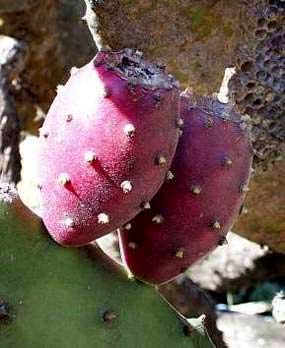 The Indian-Fig's fruits, called tunas, are edible, too. You can see some still on the cactus plant on the next page. At the right you can see that tunas bear bumps similar to those on the pads, and glochids also arise from them. The glochids must be removed before the tuna can be eaten.
The Indian-Fig's fruits, called tunas, are edible, too. You can see some still on the cactus plant on the next page. At the right you can see that tunas bear bumps similar to those on the pads, and glochids also arise from them. The glochids must be removed before the tuna can be eaten.
One way to get them off is to put the tunas on the ground and beat them all around with a brush of soft-leafed weeds. If you have a rag you can throw away, probably rubbing the tunas with it would work, too. Once you're sure your tunas are free of glochids, cut open the skin and behold what's shown below:
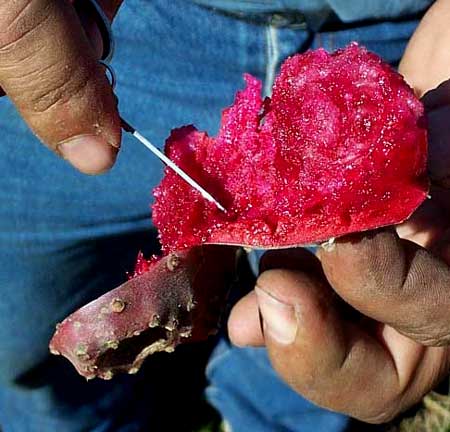
The pulp is succulent and red, almost like watermelon flesh. The taste is even a little like watermelon, but the pulp is full of small seeds. Therefore, you're faced with the same question as when you eat passion fruits or pomegranates: Do you spit out each little seed or swallow them?
When I ask the Maya what they do, some say they spit, some swallow. Most backwoods folks, as well as myself, are swallowers.
While we have our minds on cacti, it might be fun to think about the special anatomy peculiar to cacti.
Mainly, the paddle-like, edible pads that constitute most of the cactus aren't modified leaves but rather modified stem parts. However, on many cacti, including the Nopal, leaves do exist. New pads sprouting from older ones are covered with tiny, green, conical leaves, as shown below:
